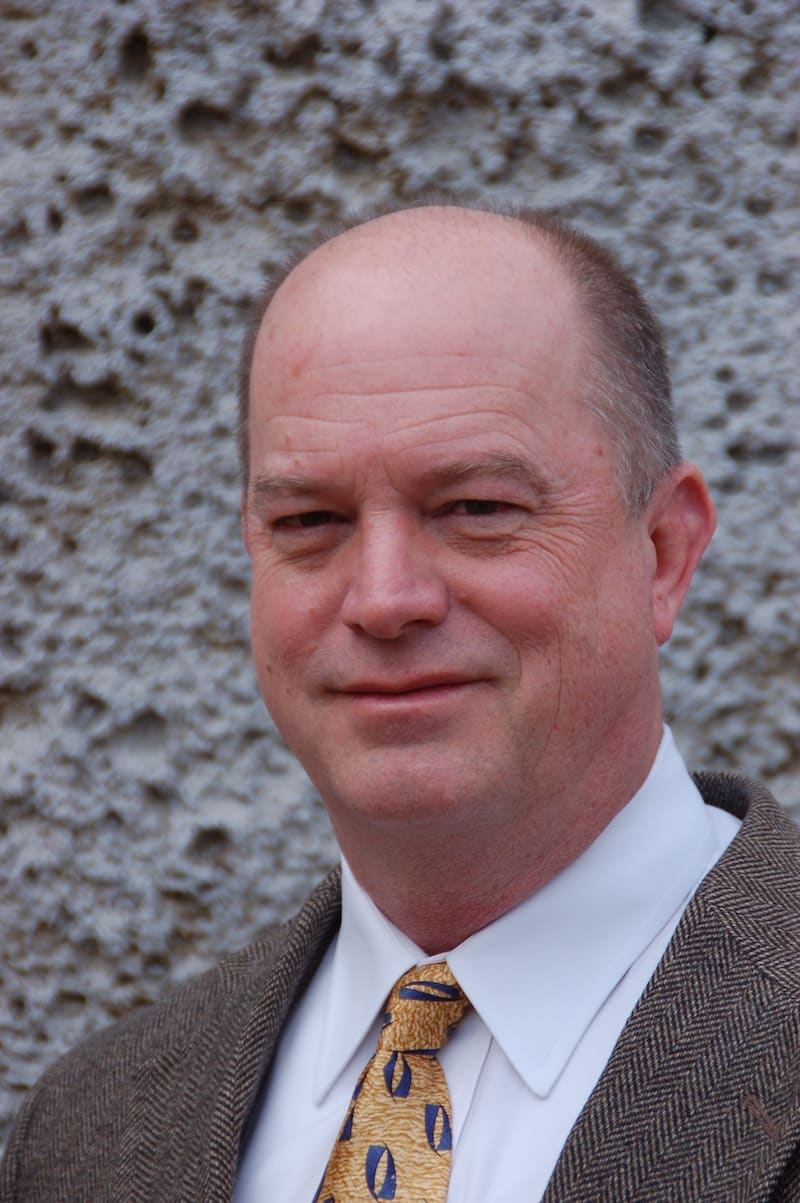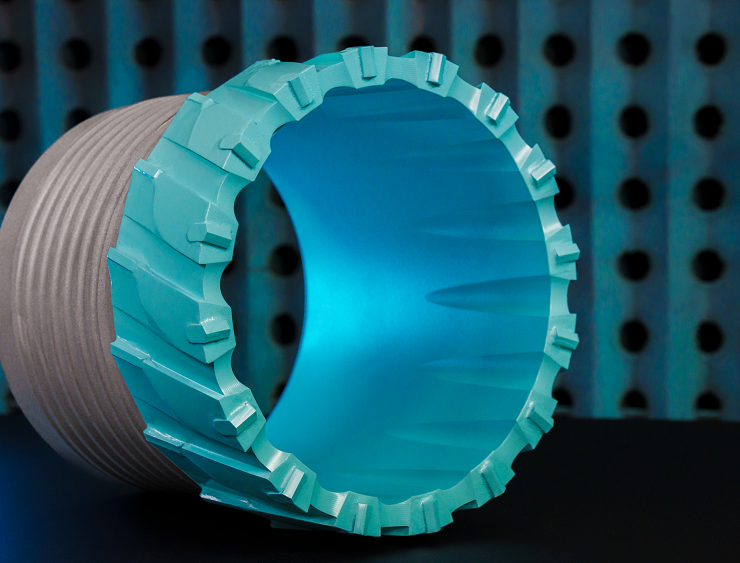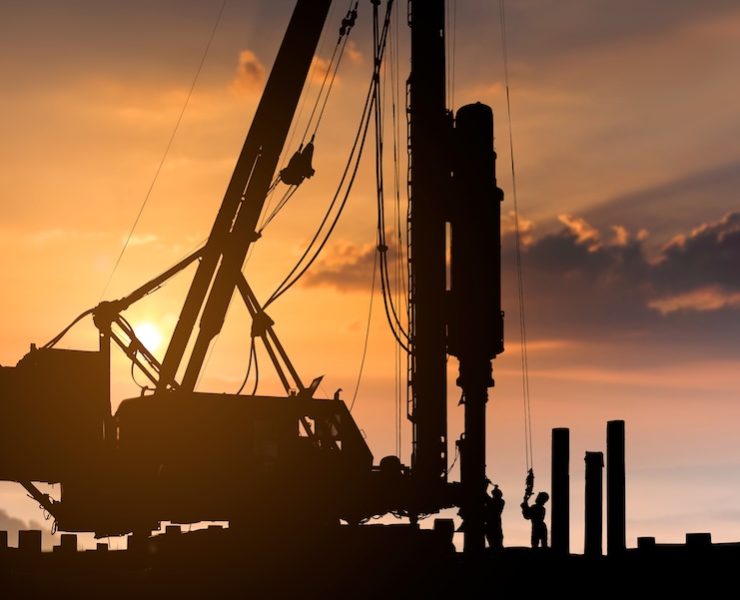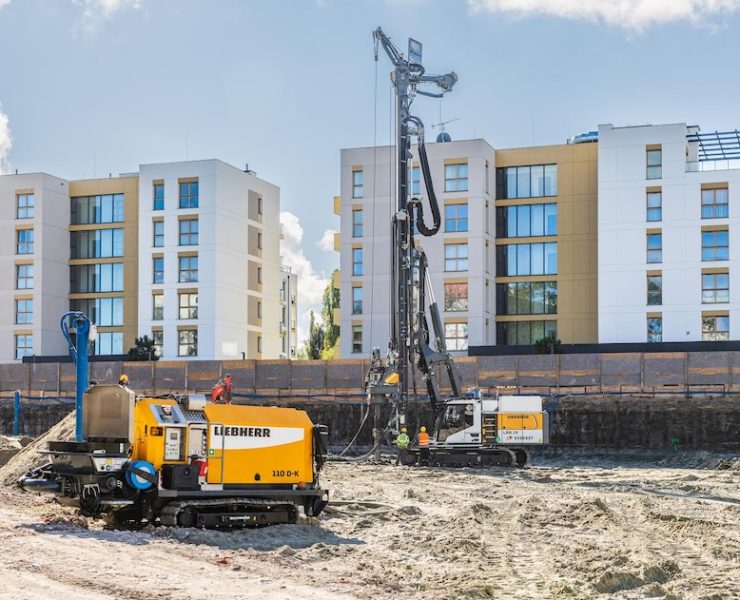Dan Brown: Big Design-Build Projects With Dan Brown & Associates

 PB: Please give us a little background about yourself.
PB: Please give us a little background about yourself.
Dan Brown: Sure. I grew up in Georgia, the son of an Army Sergeant.
He was stationed at Fort Gordon (Augusta, GA) and my mom was a math teacher. So I spent most of my childhood in Georgia… I went to Georgia Institute of Technology. I knew I wanted to be an engineer since I was a child because I liked science and related subjects. I liked tearing things apart more than I liked putting things together.
While I was at Georgia Tech, I was a “co-op” to help pay my way through school. I worked for the Georgia D.O.T. working in the field and with a survey crew.
In two of my co-op work quarters, I worked for a D.O.T. bridge design office. I thought the geotechnical reports were interesting; so before I finished, I decided to spend my last work quarter in materials and tests with Georgia D.O.T.
After going out with the drill rigs and down to Brunswick, GA for a load test and to north Georgia where there were landslides, I was totally hooked on geotechnical engineering.
PB: Tell us about your graduate school experiences.
DB: I earned my master’s at Georgia Tech with George Sowers1. He was a fascinating story teller and had a lot of case histories from all around the world. He was a real motivator and his stories hooked you.
After Georgia Tech, I went to work in Louisiana before going on for my Ph.D. at The University of Texas (Austin). Lyman Reese2 and Michael O’Neill3 were my mentors, both of whom got me much more involved in deep foundations.
After a time, I ended up as a professor at Auburn University. One of the benefits of being a professor, if you are fortunate enough to get funding, is doing what you really like. For me, that was the rough-and-tumble of the field, pile testing, understanding construction and how that related to foundation engineering.
PB: Now that you are a professor, what were some of the things you liked?
DB: As a young professor, getting out in the field and doing things was great fun. I stayed involved with Mike [O’Neill] and his projects.
Professionally, I was associated with Lyman and Mike so after they passed, people that used to call them started calling me with their construction problems.
When people are in a difficult situation and you’re helping to find solutions with construction problems, it’s an opportunity to learn. That was one thing that George Sowers used to talk about.
If you look at case histories where there is a failure or problem, and try to understand why, you are immediately pressed to find a solution to that problem. Understanding the big picture, leads you to how the failure or problem could have been avoided.
PB: Taking that philosophy to the present, how does it apply?
DB: In my current consulting practice, we work on big design-build bridge projects, and an awful lot of the effort is put into how we are going to build the structure and what is the most effective way to build it: how can we design it to be constructed with minimized risks of having problems that can cause delays in the schedule and difficulties in meeting the requirements.
PB: A design-build environment can be fun because it’s competitive.
DB: If you get hired by an agency to design something, I call that a “beauty contest.”
As a consultant, I see design-build is a competition: Who can come up with the best solution?
It’s a team competition, not just up to the foundation engineer. Although some firms don’t like it, it’s an environment that I particularly like. [Laughter] I tell people it’s like a football team. We’re the left tackle on the offensive line. [Laughter] We don’t always see what’s going on. If the quarterback fumbles the ball, it’s not always our fault. If we score a touchdown, we don’t always get noticed.
But, if we miss a block, we definitely get noticed.
So, in foundation engineering, if we do our job well, we’re like the offensive line: somebody else gets credit but everyone on the team knows we did our job.
If we don’t do our job, well, it’s a disaster of epic proportions: the quarterback is sacked, the ball is fumbled and the other team scores a touchdown. We are in big trouble. It’s not for the faint-of-heart.
It’s still fun.
PB: Is there one thing your firm is recognized for?
DB: We are known for drilled shafts.
My colleague John Turner4 and I did the Federal Highway Administration manual on drilled shafts.
A lot of our projects are driven piles, micro piles, whatever works.
We’re looking for the most effective solution to get the job done.
I think the design-build environment is amendable to that because your contractors and designers are coming together for the most effective solution.
The best solution for the team is not always the most effective solution for another individual or team with a different set of resources.
The team is looking for the most effective solution. If you are in a conventional design- build bid environment, you don’t know who the contractor is going to be.
You have to work towards the most common denominator to get the most bidders.
I think design-build is the wave of the future. My company has thrived in the design-build environment.
PB: You are recognized as one of America’s leading authorities on the construction and design of deep foundations for transportation structures. Can you tell us how this recognition developed?
DB: Since my co-op work at Georgia Tech, I have enjoyed working on bridges and the related research activities.
I got involved in bridge work when I was at Auburn through research funds from state DOT’s, the Federal Highway Administration and the National Cooperative Highway Research Program (NCHRP).
From a foundation engineer’s perspective, it’s a challenging environment for design, as well as, construction and testing because loading demands on bridge foundations are multi-faceted and different from just buildings.
The problem of lateral loadings on pile groups was my Ph.D. topic with Lyman Reese. We did some tests with groups of piles subjected to wave loadings for offshore platforms.
It was an interesting problem because we did full scale tests and made measurements of group effects on laterallyloaded piles. We had the cyclic load effects. There were multiple things going on that influenced the behavior.
It wasn’t particularly a well-understood problem at the time, so we came up with the approach of using, what I called at the time, a “P multiplier,” or a scaling factor on “p-y curves” which are used to analytically model the soil resistance acting on a laterally loaded pile.
That’s been tweaked. Other people have done tests and have looked at it in different ways. But, that concept is still employed today, 30 years later, because it’s simple and it works pretty well.
So that was how I got started.
PB: Where have you taken that recognition?
DB: Working through the Transportation Research Board, being involved with state DOT’s and working on problems related to foundations for bridges, one thing leads to another and you build off of things.
We started a field test site when I was at Auburn where we could do full scale tests on deep foundations.
We called it one of the national geotechnical experimentation sites and I twisted arms of contractors to come out and build things. We built drilled shafts.
We built displacement piles, auger cast piles. We drove piles. We did integrity tests, “faults in drilled shafts.”
We did base grouting.
I worked with a lot of my colleagues around the country. I was never the type of guy to hang out in the lab or at the computer terminal.
We were out in the field and we built things and tested them.
I think a lot of the advances we’ve achieved in foundation engineering over the life of my career have come from improved methods of testing.
The methods of testing give us feedback. If we pay attention to it, it gives us feedback on how well our designs are working, how well our construction practices are working, and if we pay attention to that, we have accountability in the process of building a foundation.
If we learn from what we measure as we build things, it allows us, then, a basis to improve.
That’s really where the advances have come from: monitoring pile driving – to load testing of drilled shafts – to integrity testing techniques.
All of those things have allowed us to improve and then we see what works and what doesn’t work.
We can see the effects of slurry and the different properties that drilling slurry have on drilled shafts. It’s not something you can do in the lab; we need to get out in the field and measure things.
I’ve talked about those real world things…
PB: Dr. George Goble talked about the days when he was young and he would measure a bridge by walking it with a string at high heights.
DB: George Goble and I go way back and in fact when he was developing the wave equation I was in Louisiana. Up until a few years ago, I had a copy of his wave equation program on a magnetic tape drive that was 40 years old. [Laughter] We were looking at things like that early on.
But really, I became noticed from all of the work we did at Auburn.
The fact that I was one of Lyman Reese’s students5… that gave me some credibility I guess. We had a very substantial group of graduate students when I was at Texas. We have gone on and been faculty at different places and have done a lot of things.
The connections that you make when you are spending the time and effort to do a Ph.D. stay with you. You get to know people who are the movers and shakers in our industry.
My generation is now the old guard.
PB: Can you tell us a little bit about the structural design of building a bridge foundation? What is the part you are involved in? What is your specialty?
DB: I call myself a foundation engineer.
Most people would say, “You are a geotechnical engineer.” I’m not limited to that.
When we pigeon hole ourselves into a geotechnical engineer or a structural engineer, we put ourselves into some kind of artificial silo. We don’t see what’s going on from the other guy’s perspective.
There are 13 of us at Dan Brown and Associates. We do foundation engineering and that involves brainstorming. What kind of foundations should we be designing?
We brainstorm from the geotechnical standpoint and from the structural engineer view. How one will model these?
Working with the contractor, how to build these things?
In a design-build environment, there is an incentive for the contractor to build it well.
In a conventional bid-build environment, the incentive for the contractor is to do the least that is required to satisfy the specifications (lowest bid).
In a design-build environment, the contractor has the incentive to achieve the best performance for the dollar. So, we work very closely with the contractor.
A lot of our [Dan Brown and Associates] work is what I call fire fighting. We’re involved heavily in helping people solve construction problems related to deep foundations. When there is a problem or when someone has difficulty figuring out how to work around it … a lot of these problems come from concrete placement and the concrete mix that is not doing very well.
PB: Does your involvement start at the beginning of a project?
DB: Most of our major bridge projects where we are in the responsible position as the designer, we are called in from the beginning.
My firm works on projects all over North America, occasionally, overseas, but mostly in North America.
Most of our work is on pretty big, significant projects … not always bridges.
Because we don’t do the site exploration or laboratory testing, we usually work with a local geotechnical engineer. Or, we may direct somebody as to the kind of information we need, so we always collaborate with local geotechnical engineering firms relying on their local experience of local geology.
I appreciate very much that we don’t know everything. People who are local to an area sometimes have a view of things or a perspective of local geology that we don’t have.
What we bring to the table is a perspective of many, many major heavy construction projects and we’re comfortable working with big contractors and major projects.
PB: I recall you spoke about using local firms for the kcICON project in Kansas City, Missouri.
DB: Yes, we used Terracon6.
PB: What have been some of your most exciting projects?
DB: The biggest project we have going on now, and the biggest we have done, is the new Goethals Bridge7 by the Port Authority of New York and New Jersey and we’re working with Langan [Engineering and Environmental Services] and Haley and Aldrich.
We were responsible for the foundation design of the bridge, seeing through the testing program and the construction.
The Audubon Bridge in Louisiana was an important project for us because there was a big cable-stay crossing and, at the time, it was the longest cable-stay bridge in North America.
We worked on the Biloxi Bay Bridge after hurricane Katrina. That was a driven pile job and it was interesting because it was done under such time pressure. It needed to be built back quickly. So there was a big financial incentive to get that rebuilt.
I also worked on the I-35W bridge in Minneapolis, the one that collapsed in 2006-2007. That one was built back quickly. Flatiron8 did that and Figg9 were the designers. We were working for the Mn/DOT as the owner’s representatives but we were really working together with the contractor because everyone was trying to get that built back quickly. It wasn’t contentious between the owners and the engineers’ design-build team. It was a team effort of trying to pull from the same end of the rope to get this done.
The St. Croix Bridge in Minneapolis is under construction now and is a nice project for us. You mentioned kcICON. There have been a number of others, too.
All in all, the Goethals Bridge replacement has been the biggest project that we have done.
PB: What is the most interesting aspect of that project?
DB: The Goethals is relatively straight forward. It’s just the sheer size of it. It’s a big cable-stayed bridge. Just getting everything done in an efficient way was a challenge. It’s for the Port Authority of New York and New Jersey and they have very stringent requirements but it’s not as technically challenging as some others.
PB: When your company comes in what is the expertise you bring to a project?
DB: In a design environment, we work as a sub-consultant to the overall bridge designer, who in this case, is Parsons Transportation Group. We work a lot with Parsons.
We’ve worked with others like Figg Engineering, T. Y. Lin [T.Y. Lin International], HDR [HDR, Inc.] and some of the other major bridge designers.
Parsons Transportation Group is one of our frequent go-to clients. We have to communicate between the bridge designer, the geotechnical information, and the construction, so we are really in the middle advising everyone.
We actually determine where the Tip elevation of the foundation should be, and, along with the team, we come to a decision about what type of foundation makes the most sense and how best to build it.
For instance, on the Goethals Bridge, seismic is a big deal. You wouldn’t think about it being in New York but…
PB: That’s becoming more of an issue in all design isn’t it?
DB: It is. As a profession, we are starting to recognize the seismic risks everywhere.
If people thought this wasn’t a big deal, well, you remember it was about a year ago that we had an earthquake in Washington, D.C. It wasn’t that big but it damaged the Washington Monument among other things.
We have to wake up. There was a big earthquake in Charleston in 1886. There were massive earthquakes in the New Madrid (Missouri) seismic zone 200 years ago that rerouted the Mississippi River. The latest South Carolina quakes were in 2014 in Edgefield and Greenville.
PB: People forget that one of the largest faults runs through St Louis.
DB: Yes, in fact the Stan Musial Veterans Memorial Bridge in St. Louis that we worked on was another where seismic was a big deal.
On Goethals, the bridge designer is trying to come up with a seismic model to evaluate the performance of the bridge and design. Certainly the foundation is a part of that, so we contribute in a meaningful way to model things most appropriately.
PB: Over your 30 years in the industry, what are some of the more significant changes?
DB: The major changes have been our ability to make measurements and do testing on foundations that were never considered possible before.
For instance, drilled shafts 40 years ago were rarely tested unless they were small diameter or drilled shafts in soil. Nowadays, we call for tests because we have the Osterberg load cell technology and Statnamic load test and other ways of doing tests.
We test drilled-shafts and other concrete piles for structural integrity because we have ways now to see if we’ve constructed the shaft properly by doing crosshole sonic logging or this new thermal Integrity testing. With driven piles, we have ways of measuring now. When I was at Georgia Tech, I remember one of the things George Sowers said, “Every time there is a conference someone has a new pile driving formula and they are all worthless for the most part.”
With the Pile Driving Analyzer and the ability to model with a wave equation computer program, we can model what is really going on and make measurements. These technologies improved our ability to install piles.
PB: As we face an aging infrastructure, there is the issue of longevity of structures.
DB: The biggest challenge to us nowadays is all of this infrastructure that we built after World War II and during the depression era. You may have watched the TV show about the Roosevelts. [President] Franklin Roosevelt started the world building things again. [President] Eisenhower after World War II started building things.
We built something that is a huge resource to our economic competitiveness and now it’s in need of repair, replacement and maintenance.
The thing is that it’s relatively easy to build it the first time. It’s a lot more of a challenge to build it the second time because now we have to manage things in a better way.
We don’t have green field sites anymore. We have to build a new bridge in the area of the old bridge and maintain traffic; so, the challenges are much more.
We design now for vessel collision, scour and seismic loading and we try not to harm the environment.
We try to do things in a more sustainable way. We don’t drive piles at night in the middle of the city. [Laughter] We have to keep the traffic going so… the constraints are much, much more than they ever were.
The need is more compelling. For our economy to keep growing, we need to invest in this critical resource of our infrastructure.
PB: You’ve participated in several design-build projects. What do you think of the P3s?
DB: I think they are great. It’s a coming thing. It’s a way to put for-profit investment to work in an effective way.
It’s a way to get things done and government is grossly inefficient in getting things done. P3s allow us to do that.
Now that being said, we don’t want to turn over control of our infrastructure to some for- profit organization that has only profit in mind.
PB: Does that concern you?
DB: Yes. The P3s in my experience, which is mainly in bridges and transportation projects, seem to work best when the government entity retains control and retains the revenue risk.
The equity partners and the design-build joint venture take on the financing of the project construction and perhaps the maintenance and the operations for some period of time but don’t have that risk of what the revenue stream is going to be.
For instance, on the Goethals Bridge, our team is being compensated with availability payments so the Port Authority, if they are going to decide what the tolls are and collect the tolls, they call the decisions and they should because they are a public agency.
The equity partners in the P3 design-build joint venture know, if the bridge is open and in service that they will have a revenue stream and what it looks like so they can arrange the financing.
The public agency gets a bridge and they don’t have to front any money.
Historically, we [public agency owner] have always been on a pay-as-you-go … we’ve collected gas taxes, and when we had enough money to do something, we had a budget and we paid someone to build a bridge for us.
Now, we [public agency owner] get someone to build a bridge for us and they [builder] finance it themselves with a promise that we [owner] will pay them back over the years and we have to have a revenue stream.
People who don’t like to pay tolls, I say get used to it. If we don’t have the political guts to raise the gas tax, we are going to have to pay for it some other way.
PB: What about foreign investment in our infrastructure?
DB: Foreign investment has been good for this country. Hey, if the Chinese want to finance our infrastructure development, I say, great.
This is a world economy.
I used to have in my dorm room a poster that the astronauts took of the earth-rise over the moon. We’re all on this one, little blue ball out in space and we all better think of this and pull together.
China has to be accountable just as the monopolies that the Roosevelts busted up have to be accountable. These are solvable problems.
PB: You are on DFI’s board of trustees?
DB: Yes, for over 14 years. Amongst the board of trustees, we have worked hard to keep it an open place for people to communicate and share information and to improve our industry.
Everyone here has commercial interests but we try to keep the commercial interests secondary to the primary interest which is to create an open atmosphere. The strength of our organization is interaction and exposure to others in the industry.
I’m a lifelong member of the ASCE and I will always be because I think it is a valuable organization. As an engineer, I expect them to protect my interests in Washington and to look out for the interests of engineers.
The PDCA and the ADSC are trade associations promoting their product and that’s what they should do.

















